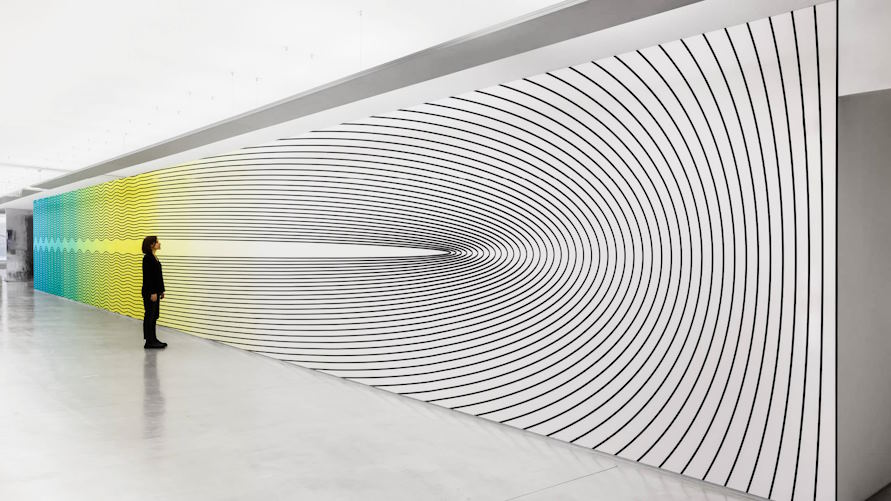In the bustling landscapes of our modern cities, the concept of urban identity looms large, reflecting the intricate tapestry of cultures, histories, and aspirations that define metropolitan life. As skyscrapers pierce the sky and streets thrum with the rhythm of diverse communities, the question of what it means to belong to a city becomes increasingly nuanced and vital. Amidst this dynamic backdrop, art exhibitions emerge as poignant windows into the soul of urbanity, offering glimpses into its myriad facets and complexities.
The Power of Art Exhibitions in Unveiling Urban Identity:
Curatorial choices and thematic frameworks in showcasing urban identity: Curatorial decisions wield significant influence in shaping how urban identity is presented and interpreted within art exhibitions. From selecting artists whose work resonates with specific urban themes to crafting thematic frameworks that reflect the multifaceted nature of city life, curators play a pivotal role in guiding viewers through a nuanced exploration of urban identity. Whether focusing on the architectural landscapes, cultural diversity, or socio-political dynamics of a city, curatorial choices can evoke a sense of place and provoke critical reflection on what it means to inhabit urban spaces.
Engagement with local communities and stakeholders: Art exhibitions provide valuable opportunities for engagement with local communities and stakeholders, fostering dialogue and collaboration around issues of urban identity. By involving residents, artists, activists, and policymakers in the curation and organization process, exhibitions can authentically reflect the lived experiences and perspectives of those intimately connected to the city. Community-driven initiatives, such as participatory art projects and neighborhood outreach programs, further strengthen the bonds between art, identity, and place, empowering individuals to actively shape the narrative of their urban environment.

Case Studies: Art Exhibitions and Urban Identity
“Cityscapes: Exploring the Soul of the Metropolis”
“Cityscapes” is an immersive exhibition that delves deep into the essence of urban life, showcasing a diverse array of artworks that capture the spirit of the metropolis. From bustling city streets to towering skyscrapers, the exhibition offers a visual exploration of the multifaceted landscapes and narratives that define modern cities.
Through paintings, photographs, and multimedia installations, “Cityscapes” examines themes of urbanization, globalization, and the human experience within the urban environment. Artists depict the vibrancy and chaos of city life, as well as the solitude and alienation that can accompany it. The juxtaposition of bustling cityscapes with intimate moments of reflection invites viewers to contemplate the complexities of urban identity.
“Cityscapes” has garnered widespread acclaim for its thought-provoking portrayal of urban identity. The exhibition has sparked lively discussions among visitors, prompting reflections on the ways in which cities shape and are shaped by their inhabitants. By bringing together artists and audiences from diverse backgrounds, “Cityscapes” has fostered a sense of community and solidarity, reinforcing the importance of art in urban identity discourse.
“Urban Voices: Expressions from the Streets”
“Urban Voices” celebrates the raw energy and creativity of street art, showcasing works that challenge conventions and amplify marginalized voices within the urban landscape. The exhibition seeks to elevate the voices of street artists who use public spaces as their canvas, exploring themes of resistance, identity, and social justice.

Featuring works by both established and emerging street artists, “Urban Voices” offers a platform for diverse perspectives and artistic styles. From graffiti murals to guerrilla installations, participating artists use their art to reclaim public spaces and engage with pressing social issues. Their contributions reflect the rich tapestry of urban identity, highlighting the resilience and creativity of city dwellers.
“Urban Voices” has sparked widespread public interest and engagement, drawing crowds eager to experience the vibrant energy of street art firsthand. The exhibition has inspired dialogue and activism within local communities, encouraging viewers to consider the role of art in shaping urban identity and advocating for positive change. By amplifying the voices of marginalized artists and communities, “Urban Voices” has become a catalyst for social transformation and empowerment.
Beyond the Gallery Walls: Art as Urban Intervention
Street art and its role in shaping urban identity: Street art, with its bold colors and provocative messages, serves as a dynamic force in shaping urban identity. From graffiti tags adorning alleyways to large-scale murals transforming city facades, street art infuses the urban landscape with creativity and meaning. By reclaiming public spaces and challenging traditional notions of art and ownership, street artists contribute to the vibrant tapestry of urban identity, reflecting the diversity and complexity of city life.
Public art installations and community engagement projects: Public art installations and community engagement projects bridge the gap between art and everyday life, fostering connections between artists and local communities. Whether through interactive sculptures in parks or collaborative mural projects in neighborhoods, these initiatives invite residents to participate in the artistic process and reimagine their urban environment. By engaging with public art, communities cultivate a sense of ownership and pride in their surroundings, strengthening social bonds and promoting inclusivity.









































